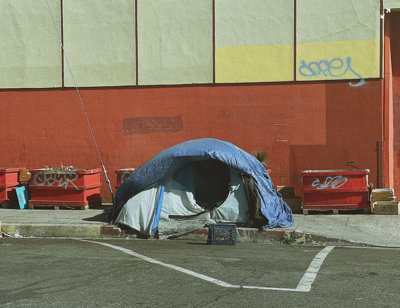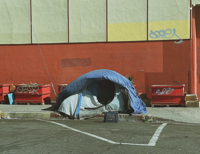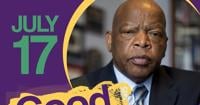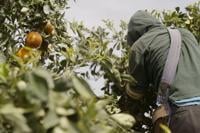
The Homelessness Prevention Unit (HPU), a program launched in 2021, looks to prevent homelessness before it occurs. Photo by Naomi August.
A first-of-its-kind predictive model shows early signs of successfully keeping more of the Los Angeles County population off the streets.
In L.A. County, where, as stated by the Los Angeles Homeless Services Authority's 2025 Homeless Count, 72,308 homeless people are living in the streets, homelessness continues to be one of the most prevalent, ongoing and urgent struggles.
To combat this, there is one program that proactively reaches people at the highest risk of becoming homeless and connects them to stabilizing services before they lose their housing.
The Homelessness Prevention Unit (HPU), a program launched in 2021, looks to prevent homelessness before it occurs.
The HPU program is a partnership between the California Policy Lab (CPL) at UCLA, the L.A. County Department of Health Services and the L.A. County Chief Information Office.
A recently published CPL report evaluated outcomes from HPU’s pilot phase (from May 2022 to February 2023), before the launch of the formal, randomized trial evaluation, which showed that people enrolled in the prevention program were 71% less likely to end up in homeless shelters or to be found on the streets by outreach teams, compared with those who did not enroll.
“In Los Angeles, one of the most urgent questions facing our region is, of course, how to solve homelessness. When we started CPL in 2017, it became really clear that the county and the city were interested in learning more about how to prevent homelessness before it happens, so we've joined these efforts for several years now,” Janey Rountree, executive director of CPL, told CALÓ News. “When it came to HPU, we wanted to see if we could identify, with predictive modeling, who is at highest risk of ending up homeless.”
Rountree also explained that, unlike other service programs, HPU identifies individuals at the highest risk of experiencing homelessness and reaches out to them, instead of the other way around.
The program uses a predictive model developed by CPL at UCLA, which analyzes data from various county departments, including DHS, L.A. County's Department of Mental Health (DMH) and others, to predict and identify people who are most likely to fall into homelessness in the next 18 months.
“The predictive model looks at different data points of things like emergency department visits, receipt of public benefits and people who may be coming in and out of the county jail who received public mental health services or other resources. The predictive model analyzes all of that information to predict who is at high risk of experiencing homelessness and our research team uses completely anonymous, privacy-protected data,” Rountree said.
According to Rountree, the predictive model is also an equitable one.
“Communities of color are particularly concerned about algorithms like our predictive modeling being unfair, and that’s OK. We know where the distrust can come from, but we make sure that its predictions are racially and ethnically equitable,” she said. “We also test equity at the point of enrollment and at the point of outcomes and we've been doing this for several years now, so we can say HPU is equitable; it is finding the types of people who are likely to experience homelessness.”
Direct cash assistance is also one of the tactics that differentiates HPU from other programs.
As stated in the CPL study, on average, participants receive $6,469 on average in financial assistance over a 4 to 6-month period. Budget caps range from $4,000 to over $10,000, depending on household size and random assignment to either the “base” or “expanded” financial assistance groups.
Payments are also delivered quickly—often within days.
“Many times falling into homelessness does not start because you lost your home; it starts in other ways, like missing a utility payment or a car payment and without a car you can’t go to work and that then leads to homelessness. We know how direct cash assistance can help a person stay afloat,” Rountree said. “The program is entirely voluntary, so if the person enrolls in the program, they qualify for cash assistance almost immediately. The cash assistant is fairly flexible depending on what the immediate needs are.”
Participants of the program receive short-term, personalized case management and flexible financial assistance as well as referrals to additional supportive services such as mental health care, job training or legal support.
The program currently serves about 700 people annually, with the overarching goal of stabilizing individuals and families before a housing crisis results in homelessness.
“This model helps us reach people before they experience a crisis,” said Dana Vanderford, Associate Director of Homelessness Prevention for the L.A. County Department of Health Services. “It’s a smart, effective, and compassionate way to prevent homelessness.”
The CPL study also found that 2% of HPU enrollees ended up in shelters or on the streets, compared with 6% of those who did not enroll.
Many of the people whom the programs serve, as explained by Rountree, are often those who are disconnected from local resources or who, for one reason or another, are distrustful of the system and do not reach out for help.
“HPU is reaching out proactively to people and the individuals are generally totally disconnected from services, especially homelessness prevention services,” she said. “These are not only people who are at the highest risk; they're people who are not reaching out for help. They might distrust the system. They may not know where to get help.”
Despite this, HPU’s pilot phase has not been easy. HPU has dealt with enrollment difficulties during their initial phase. Between May 2, 2022 and February 22, 2023, HPU reached out to 1,620 individuals, but only about one in five ultimately enrolled.
Yet according to the CPL study, the program has implemented key changes aimed at improving outreach effectiveness, streamlining enrollment processes and ensuring timely exits so that new clients can enroll.
When the HPU began, all case managers were responsible for outreach, but that has now changed. Starting in September 2023, new outreach roles were added, including a dedicated outreach coordinator, outreach specialists and outreach managers. One of the other changes has been the number of times clients were contacted. At first, clients were called every three days, but this became difficult to maintain and oversee. Today each client receives at least one phone call per week for a maximum of three weeks.
HPU staff have worked to ensure that more people are being discharged within four months so that they can enroll new clients without expanding their preferred caseload ratio.
HPU is still in the process of their first evaluation period, with it being finalized in 2027. Rountree said the HPU would need to find funding to continue its programming through the evaluation period.
“Our biggest hope is that we'll have the opportunity to continue to study the Homelessness Prevention Unit through the CLP study in 2027. We really want to know whether this program is having an impact,” Rountree said. “If it does, we would hope that the county would invest in this program and scale it to reach even more people.
To read all of CPL’s findings on HPU and to access the full report, visit capolicylab.org.










(0) comments
Welcome to the discussion.
Log In
Keep it Clean. Please avoid obscene, vulgar, lewd, racist or sexually-oriented language.
PLEASE TURN OFF YOUR CAPS LOCK.
Don't Threaten. Threats of harming another person will not be tolerated.
Be Truthful. Don't knowingly lie about anyone or anything.
Be Nice. No racism, sexism or any sort of -ism that is degrading to another person.
Be Proactive. Use the 'Report' link on each comment to let us know of abusive posts.
Share with Us. We'd love to hear eyewitness accounts, the history behind an article.